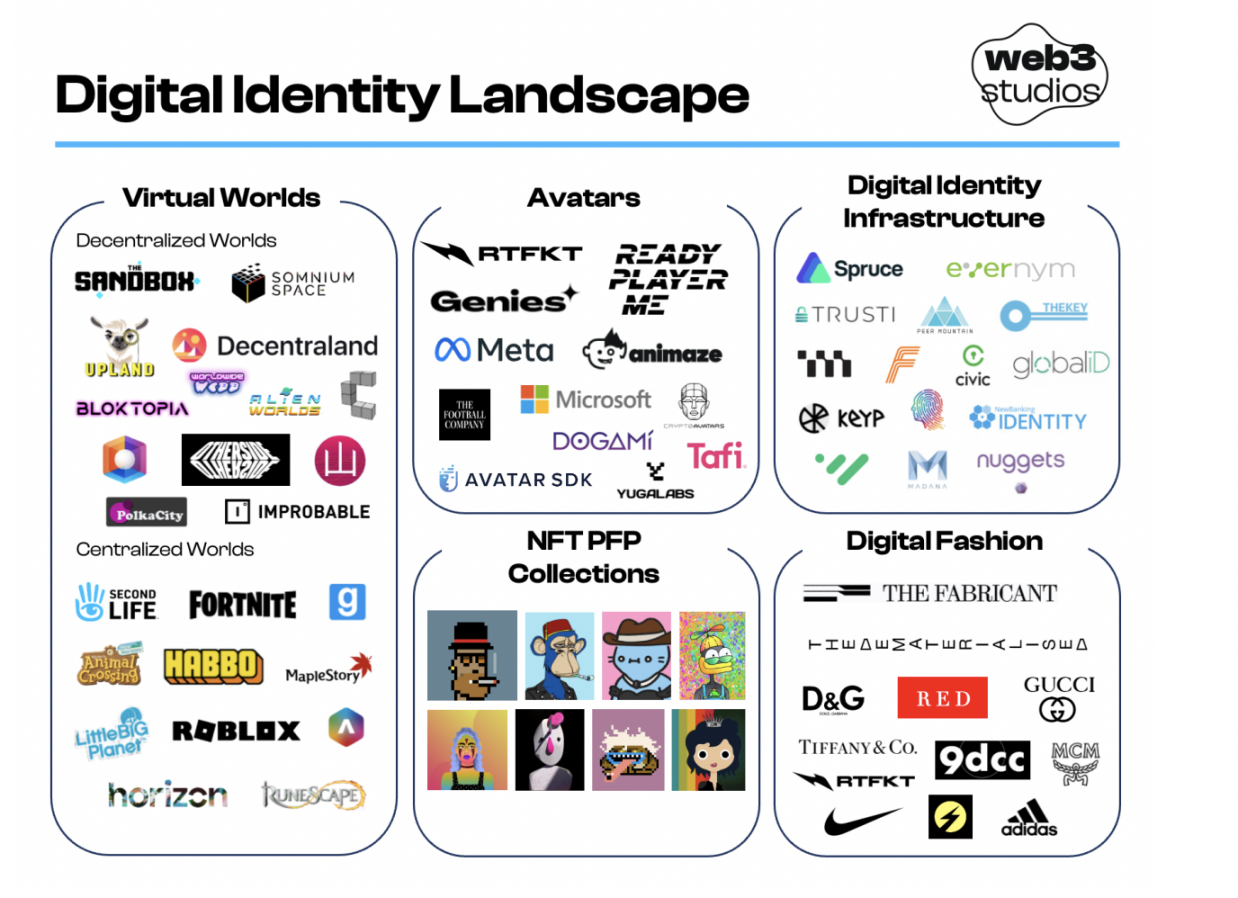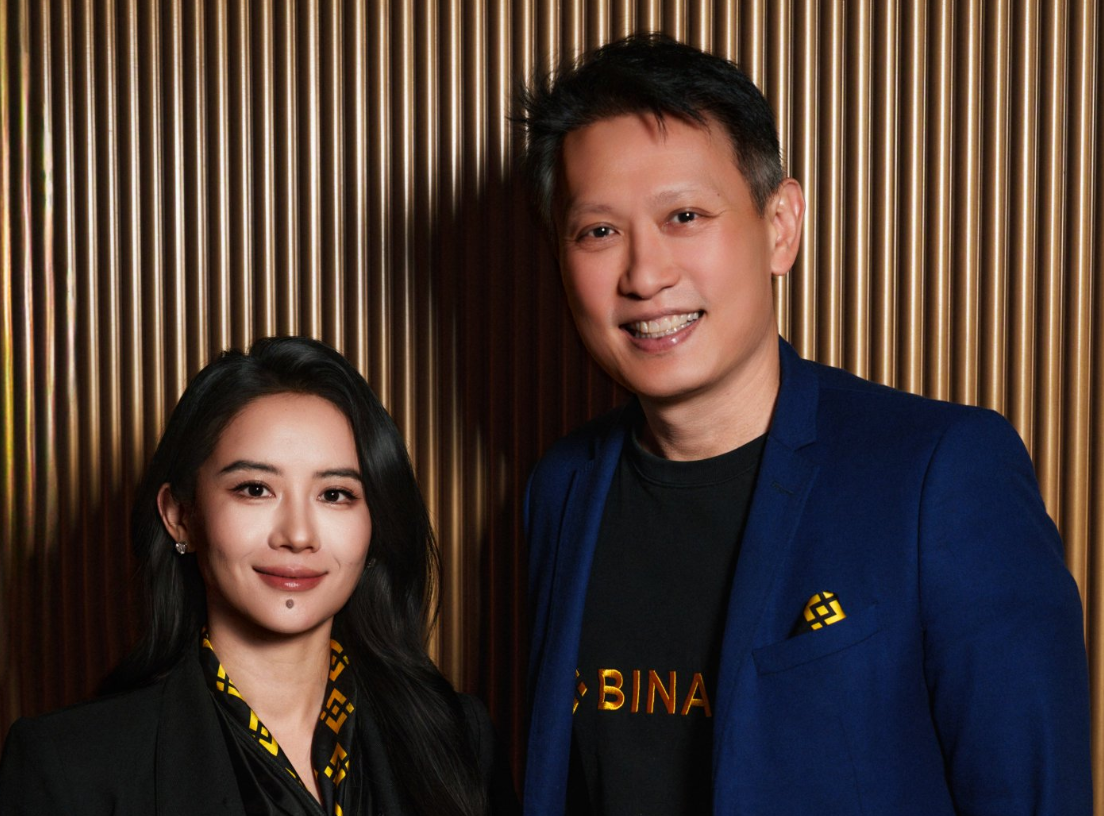一览「数字身份」市场结构:我们将在元宇宙中成为谁?
原文标题:《Digital ldentities Market Repont:Who will we be in the Metaverse?》
原文作者:web3 Studios
原文编译:angelilu,Foresight News
TL; DR
本报告讨论了数字身份对我们人类意味着什么以及为什么我们需要数字身份的问题,现实世界 vs 虚拟世界的利弊,以及数字时尚在实现自我表达方面的作用。
为了撰写这份报告,我们与来自元宇宙、NFT 以及其他机构的一些专业人士进行了合作。深入研究了当前的市场结构和动态。
每个人都在谈论元宇宙—— 一种新的人类互动模式。它将会成为科技领域下一个万亿美元的机会,越来越多的公司对沉浸式虚拟场所表现出兴趣。这些场所将使客户能够超越物理上可能的范围进行旅行。
企业的大量投资推动了其关注度的急剧增长,这些企业正在寻找新的与客户互动的方法,以及风险资本家寻求资助下一代独角兽企业。创业者正在建立新的世界,并为人们创造创新的互动方式。
我们的主要观点是,数字身份识别市场仍处于起步阶段——但在未来几年将呈指数级增长。
我们预测,到 2030 年,数字身份领域将产生超过 6000 亿美元的收入,人们的生活越来越向数字领域转移,本报告中的一些数字身份的核心问题的答案变得更加重要:
我们的数字身份在未来应该是什么样子,为什么?
Web3 原生公司和成熟的品牌都在做什么?
在这个领域的并购活动方面会发生什么?
各个公司正在构建数字身份的基础设施,并创造出一个可划分为各种类型的生态图:

在虚拟空间中表达一个人的数字身份时,Avatars 发挥着重要作用,大型科技公司和新兴的第三代互联网公司在启用数字身份的垂直行业走在前列。
数字时尚提供了一种在数字空间中在一个细微的层面上进行自我表达的方式,市场上的成熟品牌开始认识到其价值,并在这一领域进行了大量投资。
初创企业正在创造基本概念,除了在视觉表达方面的工作,许多人正在努力解决数字身份的信任差距问题。对于这一点,加密凭证似乎提供了有希望的实用概念。
两个主要方面正在推动这一领域的并购活动:
大型企业正试图通过收购智能团队和技术内部化来参与其中
大型企业通过通过收购相邻的业务横向扩展其产品,或通过整合价值链的一部分纵向扩展。
什么是元宇宙
简单来说,元宇宙没有一个确切的定义,是在数字世界复制现实世界的东西,还是为实现巨大想象的产物?
Polygon Studios 的 元宇宙业务负责人 Brian Trunzo 表示,元宇宙代表了一个新的数字领域,它将改善消费者和企业之间的关系。数字身份将在其中发挥重要作用,使用户拥有数据所有权,并决定其数据的使用时间和方式。
关于元宇宙这个术语的确切定义正在讨论中,现在或许也不需要一个清晰的定义,在未来几年的发展又会变得不一样,谁会在十年前想到互联网是什么样子,要保持思想尽可能的开放,消除这些定义对我们的想象力所造成的心理限制,以真正拥抱这个机会。以下为一些方向性的特征,帮助你感知元宇宙:
可互操作的身份
数字生活和现实生活的融合
通过 NFT 携带身份和财产
跨空间移动
实时的人际互动

1.品牌的机会
最有可能的是,不会有 「一个元宇宙」,而是有许多单独的元宇宙,可能会分为不同的主题的元宇宙,其中的一些将被连接起来,实现互操作。
2. 进入元宇宙的品牌

3.五个关于元宇宙的大事件
元宇宙是一个游戏论坛戏论坛、广告平台和社会互动的中心。
商家和创作者的巨大机会——耐克收购了 RTFKT、阿迪达斯收购了 NDFKT、微软购买动视。
消费者的兴趣正在上升——2022 年在谷歌趋势中,对元宇宙的搜索增长了 2200%。
NFT 是关键 -- 数字所有权正在成为现实。
人类的创造力被提高到一个新的水平 -- 离开了物理世界的限制。
数字身份:我们将在元宇宙中成为谁
1.从物理身份到元宇宙身份

物理身份:包括你的外表、你在哪里上学、你住在哪里。
互联网身份:你搜索了什么、你买了什么、你在网上说了什么。
元宇宙身份:你的域名和虚拟地址。
我们所说的元宇宙身份是指你将你的物理和互联网身份与数字身份联系起来,只有在你愿意的情况下,才会有数字身份,你可以掌控你与他人的互动,并且控制有关你个人身份的信息,需要的的支持层是构建在公共区块链技术上的去中心化平台。
2.Avatars:数字身份正在形成
数字身份的一个早期具体表现是 Avatars 世界,也是我们在虚拟领域的延伸。对这些 Avatars 的外观没有任何限制,但也存在分歧,像 Meta 这样的大型科技公司正在努力设计尽可能接近我们真实身份的头像,并为其配备著名品牌的可购买的服装,专注于实现对一个人的真实世界特征的虚拟表现。
而另一种声音表示,数字身份应该注重虚拟世界中的匿名性和多样性,打破现实世界的长期形成的模式和局限性,如生活环境、社会经济状况、性别、身体特征等,
对不起 Meta,这不是 Avatars 该有的样子, Avatars 是我们在元宇宙的新数字身份,让我们发挥想象力,抓住这个机会成为真正想成为的人,并建立一个更具包容性的和多元化的数字国家。——Sebastiel

在此不评判两种观点的对错,最终,我们需要这个二维 / 三维版本来使用虚拟服务进行互动。

数字身份头像图谱
与类似人类的 Avatars 相比,抽象型 Avatars 有以下特点:
真实的自我表达:可根据角色、情绪或意见动态改变;
社会阶层流动性:残疾人可以在网上不受限制地表现自己;
开放的多样性:可通过不同的 Avatars 体验成为不同种族、性别甚至物种的感觉;
交互设计:打破类人型 Avatars 仅有的交谈、跳舞和玩游戏等互动限制;
更强的创造性:在虚拟故事、视觉艺术和娱乐等领域开辟了新的设计可能性。
3.数字潮牌
新的 Web3 模式为时装业的数字化提供了前所未有的机会,近几年来,我们观察到数字时尚的三个主要趋势和参与者:
新创建的 Web3 原生数字时尚品牌
实体品牌基于 NFT 的数字时装系列
数字时尚基础设施层(如市场、陈列室、创造者工具)
根据麦肯锡公司的数据,全球虚拟时尚商品的支出在 2021 年超过了 300 亿美元,占全球时尚市场的 2%,但随着元宇宙和数字身份的采用不断增加,将会有更多的市场机会被开发出来。

Red DAO 的联合创始人 MeganKaspar 表示,今天链上数字时尚有五个主要的趋势性用例:投资、数字裁缝、二维可穿戴设备、三维可穿戴设备和供应链证明。
有三个驱动因素可以触发数字时尚的采用,其中之一最近发生在中国,中国版的 Instagram——小红书,小红书拥有超过 1.48 亿日活用户,最近推出了一个 NFT 市场。AR 数字时尚是销售的主要驱动力,也是该平台最受欢迎的案例。
4.让数字身份更加可信
与现实世界相反的是,数字身份识别采用的是加密的信任根基,而不是人文的信任根基。
Web3 为安全和隐私控制提供了新的可能性,加密凭证可以被推广到使用数字身份的元宇宙应用中,虽然最终这些凭证可能会变得非常复杂,但钱包地址和历史已经是一个很好的开始。
数字身份市场
1.数字身份生态图
虽然许多新兴概念刚刚被创造出来,但数字身份的第一个细分市场已然出现。

Virtual Worlds:如 The Sandbox、Decentraland 和 Somnium Space 正在建立 NFT 原生世界,以使用户不仅能够真正拥有自己的身份,而且能够拥有世界中的土地和物品。
Avatars:可促进数字身份的实现,社区、品牌或创造者都可以开发他们自己的 Avatars 系列,包括匹配的时装系列。
NFT PFP Collections:拥有一个 NFT 可以进入相应的社区,赋予数字身份以归属感或对某些事物的看法。
数字身份基础设施:解决数字身份的信任差距,并确保身份方面的安全和隐私。
数字时尚:目的是让人们能够为自己的数字身份配备适合其个性和环境的各种服装选择。
2.市场规模:数字身份的影响会有多大?
我们认为数字身份领域的经济价值将在未来 10 年呈指数增长,与 Web 2.0 时代的其他技术相比,数字身份不再需要从头开始建立基本的技术基础设施。Web3 的开源性质加速了软件开发的周期。另外,费者越来越热衷于他们的数字身份,并愿意为他们的数字身份付费。
我们预计,到 2030 年,数字身份领域将产生超过 6000 亿美元的收入。
收购——正在扩张的生态版图
在任何创新周期中,随着一个行业的成熟,网络效应和规模经济变得更加明显,较大的参与者通过横向收购相邻的企业以扩大其服务范围,如去中心化的加密货币交易所 Uniswap 收购了 NFT 市场聚合商 Genies,或者出现纵向收购,如 NFT 市场 Opensea 收购 NFT 市场聚合商 Gem。
研究驱动的买入
整合与去中心化
结论性思考:为什么现在就参与进来
我们将在元宇宙中成为谁?
由于这个问题将在很大程度上决定谁将参与到价值创造中来,自然会有一系列不同的利益相关者,他们的利益各不相同。
像 Meta 这样的科技巨头正在努力将真实的身份与类似人类的 Avatars 联系起来,以便弥合社交媒体和元宇宙角色之间的差距。
Web3 社区也有不同的阵营,其与去中心化和社区所有权的核心思想相近,要求在虚拟世界中实现匿名性和多样性的呼声很高。
Avatars 是表达我们一部分数字身份的一个起点,但为了真正反映出我们独特,以及自我的复杂性,并同时保证它们的安全,需要在实践中找到它正确的概念,目前早期的实验即可编程的公共区块链正在创造新的机会。Web3 公司、企业、机构和终端用户将不得不保持开放的心态,以塑造数字实体的未来。



